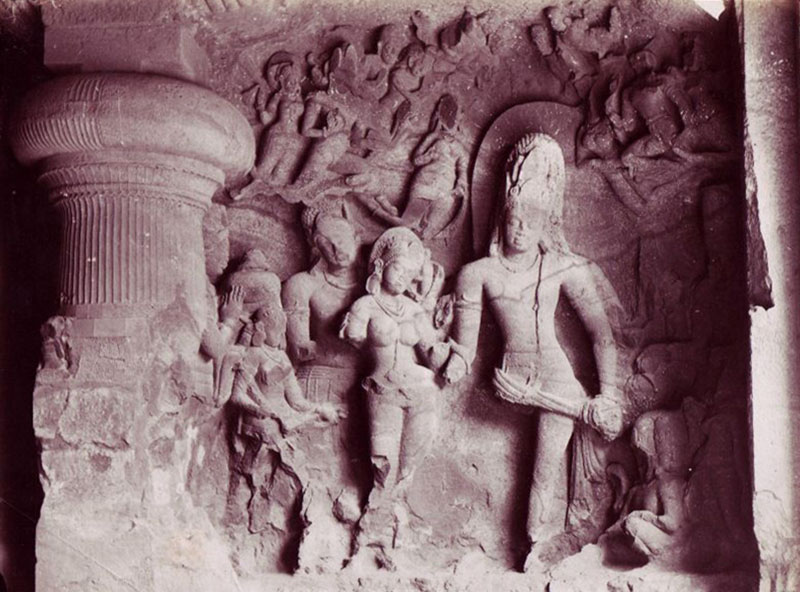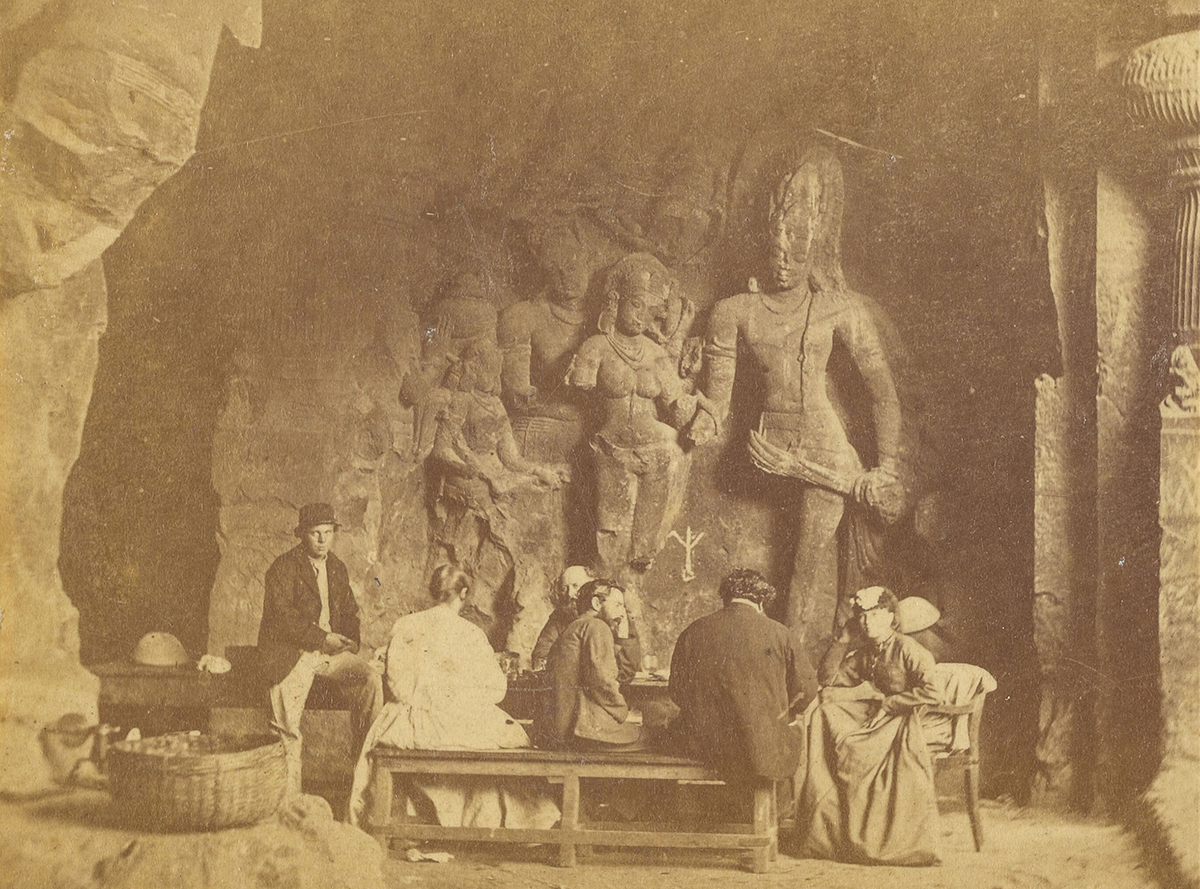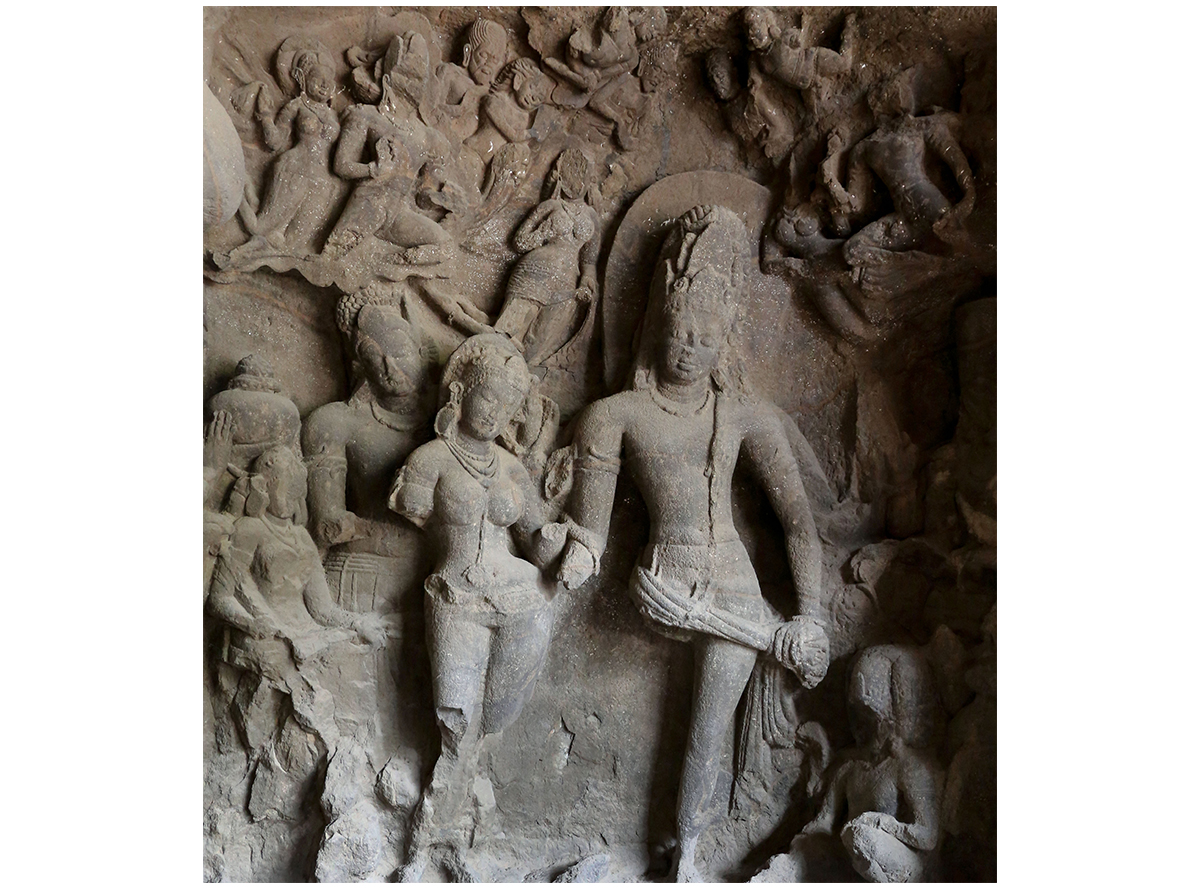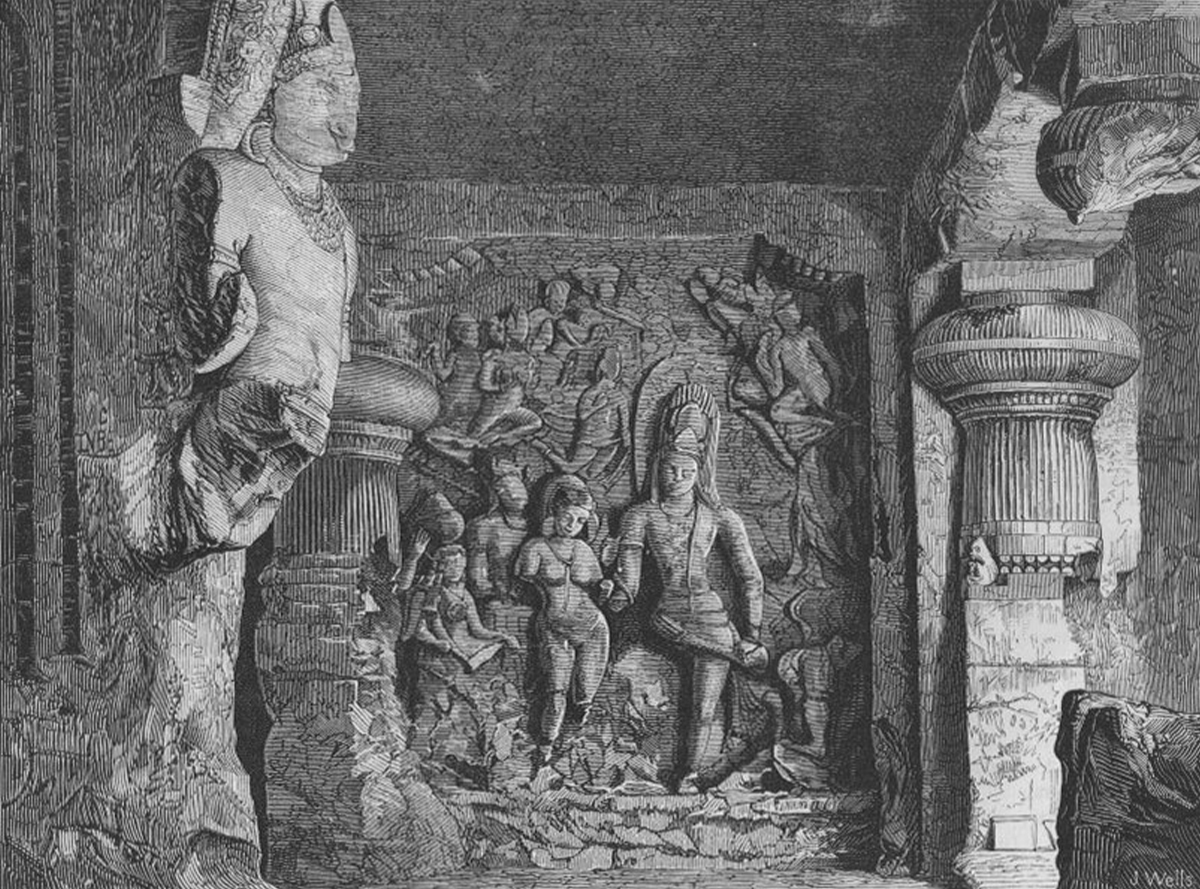ARTICLE
Kalyanasundara, Elephanta Cave 1
The central figures are surrounded by other deities attending the wedding ceremony. A figure on Parvati’s right side has been identified as her father Parvata, who is depicted giving his daughter away. Another figure on her right has been identified as the moon deity Chandra due to the crescent on his neck; he stands to Parvati’s right and is depicted holding a pot, presumably filled with nectar for the wedding ceremony. Also part of Parvati’s entourage is a female attendant holding a fly-whisk, necklaces and earrings.
Brahma, depicted in his three-faced form, has been interpreted as the priest of the ceremony owing to his position at the front-right of the relief, where he appears to be tending the ceremonial fire. Behind him is the four-armed Vishnu, depicted wearing a cylindrical headdress. Two of the deity’s hands are damaged; of the remaining two, the front right hand bears a lotus and the back left hand holds a discus. The female figure next to Vishnu is believed to be Parvati’s mother, Mena. The upper register of the panel also depicts several wedding attendees who have been identified as a group of siddhas. Bhringi is depicted next to Shiva’s head, while several gandharvas and apsaras fly immediately above the principal figures.
The Kalyanasundara episode is a recurring narrative in several scriptures and epics, such as the Linga Purana, Vamana Purana, Ramayana and Mahabharata. The Elephanta relief appears to follow the narrative in the Matsya Purana, with most of the figures mentioned present in the relief, with the only point of divergence being that the text describes Parvati’s brother Sumabha as the one who gives her away in marriage.
The damage to the cave and the figures is believed to have occurred during the sixteenth-century Portuguese occupation of the region. Following restoration work undertaken in the 1970s, the Elephanta cave group was designated a UNESCO World Heritage Site in 1987.
Bibliography
Our website is currently undergoing maintenance and re-design, due to which we have had to take down some of our bibliographies. While these will be re-published shortly, you can request references for specific articles by writing to hellomapacademy@map-india.org.










